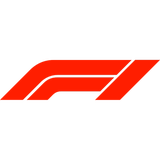





































































































































Hulkenberg changing his mind about F1 halo after crash
MONZA, Italy (AP) — Nico Hulkenberg is saying hello to the halo.
Hulkenberg has often dismissed the protective device on F1 cars, which was introduced this season, with the Renault driver saying last year that it looked stupid and wasn't necessary.
However, the halo's benefit appeared plain to see at the Belgian Grand Prix last weekend when Fernando Alonso's McLaren spiraled into the air and bounced on top of Charles Leclerc's Sauber during a dramatic first-lap crash.
"I think . whilst I am still not a big fan of halo and the device, I have to see the facts and admit that it does bring something to Formula One, especially the safety that we appreciate in the car," Hulkenberg said at a news conference on Thursday, ahead of the Italian GP.
"Yeah, divided, mixed feelings about it still but it's not down to me anyway," he said. "It is what it is."
Motorsport governing body FIA made the head protective device mandatory in F1 this year in order to protect drivers from potentially fatal impacts such as loose tires barreling at high speed, other flying debris and — in the case at Spa — one car landing on another.
The halo forms a semi-circular barrier around the driver's helmet in the front half of the cockpit, protecting the head without completely closing the cockpit. When first tested ahead of 2016, drivers were split as to whether they liked it with some criticizing the halo on aesthetic grounds.
"Looking back at the images we can't know what will have happened without it (the halo) but obviously I was quite happy to have it over my head," Leclerc said. "And as Nico said, I think it deserves to be in Formula One now, whether it looks good or bad, I don't think that matters anymore."
Alonso was sent airborne when Hulkenberg ploughed into the back of his car, but no one was harmed, with the device surrounding Leclerc's cockpit appearing to save him from a serious head injury.
"I think it's proven pretty useful and a good device," Hulkenberg said. "Obviously we can only speculate what would have happened without it but it looked pretty clear from the point that the tire marks were obviously all over the halo and from that point of view it's done a very good job, to keep the head safe."
The FIA has been looking at ways to improve cockpit protection and limit the risk of head injuries after French F1 driver Jules Bianchi — who was a close friend of Leclerc's — died in July 2015 and British IndyCar driver Justin Wilson died a month later.
Bianchi died at the age of 25, several months after massive head injuries sustained at the Japanese GP in October 2014.
Bianchi's accident at Suzuka occurred at the end of the race in rainy, gloomy conditions when his Marussia team car slid off the track and ploughed into a crane picking up the Sauber of German driver Adrian Sutil, who had crashed at the same spot one lap earlier.
"Speaking for Jules, it wouldn't have helped anything ... it was just a shock and the shock was too big," LeClerc said. "If it helped or not at Spa I have no idea but in some circumstances it can help so I think it's a good thing to have."
